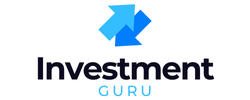If you dream of quitting your 9-to-5 long before 65, you’re not alone. The FIRE (Financial Independence, Retire Early) movement has made early retirement more than just a fantasy—it’s a reachable goal for everyday earners. But to achieve it, you need more than motivation. You need the right strategy—and it all starts with using the top investment accounts for early retirement.
In 2025, building a portfolio that supports early retirement is easier than ever with a mix of tax-advantaged and flexible investment accounts. Each account type plays a unique role in your plan, whether you’re looking for growth, accessibility, or tax efficiency.
Let’s explore which accounts should be on your radar and how to make the most of them.
Table of Contents
What Makes an Account Suitable for Early Retirement?

Early retirees face one major challenge—accessing funds before age 59½ without penalties. That’s why ideal accounts should:
- Grow tax-free or tax-deferred
- Allow penalty-free early access (with planning)
- Support high contribution limits
- Be flexible for life events
A blend of retirement accounts and taxable accounts creates a strategic income stream at every phase of early retirement.
Understanding Tax-Deferred vs. Tax-Free Accounts
| Account Type | Tax Treatment |
|---|---|
| Tax-Deferred (401k, Traditional IRA) | Contributions reduce taxable income now; taxed on withdrawal |
| Tax-Free (Roth IRA, HSA) | Contributions taxed now; withdrawals are tax-free |
| Taxable Brokerage | No tax advantages; but flexible and accessible anytime |
A smart early retirement strategy mixes all three for optimized income and tax efficiency.
Traditional 401(k) Plans
Pros:
- High contribution limits ($23,000 in 2025)
- Employer match = free money
- Tax-deferred growth
Cons:
- Early withdrawal penalties before 59½ (unless using SEPP or Rule of 55)
Best Use: Build long-term retirement wealth while working.
Roth 401(k) Accounts
Pros:
- Tax-free withdrawals in retirement
- Same high contribution limits as traditional 401(k)
- No income limits for contributions
Cons:
- Contributions don’t reduce taxable income today
Best Use: For young, high-earning individuals expecting higher future tax rates.
Traditional IRA Accounts
Pros:
- Tax-deductible contributions (subject to income limits)
- Flexible investment options
Cons:
- Penalties on early withdrawals unless exceptions apply
Best Use: Supplemental tax-deferred growth for moderate-income earners.
Roth IRA Accounts
Pros:
- Contributions can be withdrawn anytime tax and penalty-free
- Tax-free growth and qualified withdrawals
- Income grows completely tax-free
Cons:
- Income limits for direct contributions
- Must wait 5 years to access earnings
Best Use: Cornerstone account for early retirees due to flexible access.
Brokerage Accounts (Taxable)
Pros:
- No contribution limits
- Access funds anytime
- Long-term capital gains taxed favorably
Cons:
- No tax deferral or deduction
Best Use: Bridge the gap between early retirement and traditional retirement age.
Health Savings Accounts (HSAs)
Pros:
- Triple tax advantage: tax-deductible, tax-free growth, tax-free withdrawals (for medical)
- Funds roll over annually
Cons:
- Must be paired with a high-deductible health plan
Best Use: Long-term savings for medical expenses—or as a stealth retirement account.
Solo 401(k) and SEP IRA (for Self-Employed)

Pros:
- Huge contribution limits ($66,000+ in 2025)
- Business-friendly deductions
Cons:
- More complex setup and administration
Best Use: Side hustlers, freelancers, and business owners building a retirement fund fast.
Mega Backdoor Roth
Pros:
- Supercharges Roth contributions through after-tax 401(k)
- Tax-free growth with strategic conversions
Cons:
- Requires plan support and high income
Best Use: High-income earners maxing out tax-free contributions.
Roth IRA Conversion Ladder
How It Works:
- Convert traditional IRA to Roth IRA annually
- Wait 5 years to access each year’s conversion tax-free
Best Use: A legal strategy to access retirement funds before 59½ without penalties.
After-Tax Contributions in 401(k)s
Pros:
- More room to invest than traditional limits allow
- Convert to Roth for tax-free growth
Cons:
- Not offered by all employers
Best Use: High earners looking to invest aggressively.
529 Plans for Retirement Flexibility
While traditionally for education, unused 529 funds can be:
- Rolled into a Roth IRA (with limits)
- Used for continuing education in retirement
Best Use: For those retiring early with education plans or kids.
Using Real Estate in a Retirement Plan
Real estate can:
- Generate rental income
- Appreciate in value
- Offer tax benefits through depreciation
Use:
- Taxable accounts for flexibility
- Self-directed IRAs for tax-deferred real estate
Dividend Investment Accounts
Build a passive income stream through:
- Dividend growth stocks
- ETFs that pay reliable yields
Best housed in:
- Roth IRAs (for tax-free income)
- Brokerages (if qualified dividends apply)
REITs in Tax-Advantaged Accounts

REITs generate income but are tax-inefficient in taxable accounts.
Best Use: Keep REIT ETFs inside Roth or traditional IRAs to avoid ordinary income taxes.
Crypto Accounts for Early Retirement
Pros:
- High growth potential
- 24/7 access and global liquidity
Cons:
- Volatility and regulatory uncertainty
Use crypto as a satellite investment—never your core strategy.
High-Yield Cash Accounts for Flexibility
Keep 6–12 months of expenses in:
- High-yield savings
- Money market funds
- CD ladders
Best Use: Safe place to draw cash during early retirement.
Taxable vs. Tax-Advantaged Investment Strategy
Taxable accounts = short-term access
Tax-advantaged accounts = long-term wealth
Use both to:
- Control your tax bracket
- Maintain consistent income
- Access funds at every phase of retirement
Which Accounts Should You Fund First?
Order of Operations:
- Employer 401(k) match
- HSA
- Roth IRA
- Max 401(k)
- Brokerage account
- Mega Backdoor Roth (if available)
Early Withdrawal Penalties and How to Avoid Them
Avoid penalties using:
- Roth IRA ladders
- Substantially Equal Periodic Payments (SEPP)
- Rule of 55 (if you leave your job at 55+)
Always plan before tapping retirement accounts early.
Creating an Account Allocation Plan
Think in terms of:
- Short-term needs (0–5 years): Brokerage, cash, Roth contributions
- Mid-term needs (5–10 years): Roth IRA, laddered CDs
- Long-term growth (10+ years): 401(k), IRA, real estate
Rebalancing Accounts for Early Retirement
Check your allocation:
- Annually or after big market moves
- Adjust stocks vs. bonds based on risk and age
- Tax-efficient rebalancing = fewer capital gains
Common Mistakes to Avoid
- Ignoring tax implications
- Underutilizing Roth accounts
- Relying solely on 401(k)
- Forgetting health expenses
- Lack of liquidity in early years
Plan early. Diversify smartly.
Real-Life Account Allocation Examples
Aggressive Early Retiree (Age 30):
- 50% Taxable Brokerage
- 20% Roth IRA
- 20% 401(k)
- 10% Crypto + Real Estate
Moderate Early Retiree (Age 40):
- 40% Brokerage
- 30% Roth IRA
- 20% 401(k)
- 10% HSA + Cash
Conservative Early Retiree (Age 50):
- 30% Brokerage
- 40% Roth IRA
- 20% Traditional IRA
- 10% Cash + CDs
Conclusion
Selecting the top investment accounts for early retirement is a cornerstone of the FIRE journey. By understanding how each account works—taxes, access, and growth—you can build a flexible, powerful portfolio that funds your freedom long before traditional retirement age.
Don’t rely on one account. Mix them strategically. And remember—it’s not just about the money. It’s about creating a life you don’t need to retire from.
FAQs
Can I retire early using only a 401(k)?
Unlikely. You’ll face early withdrawal penalties. Use Roth IRAs and taxable accounts too.
What’s the best account for early withdrawals?
Roth IRAs (contributions), brokerage accounts, and HSAs (for medical) are most accessible.
Should I invest in a Roth or Traditional IRA for early retirement?
Roth offers more flexibility for early retirees due to tax-free and penalty-free withdrawals of contributions.
Are HSAs really for retirement?
Yes! Unused funds can be used for medical expenses tax-free—even in retirement.
How do I avoid the 10% early withdrawal penalty?
Use Roth IRA ladders, SEPP, or Rule of 55 strategies.
Suggested External Links:
- IRS – Retirement Plan FAQs
- Bogleheads – Roth IRA Conversion Ladder Guide
- Investopedia – Best Retirement Accounts


